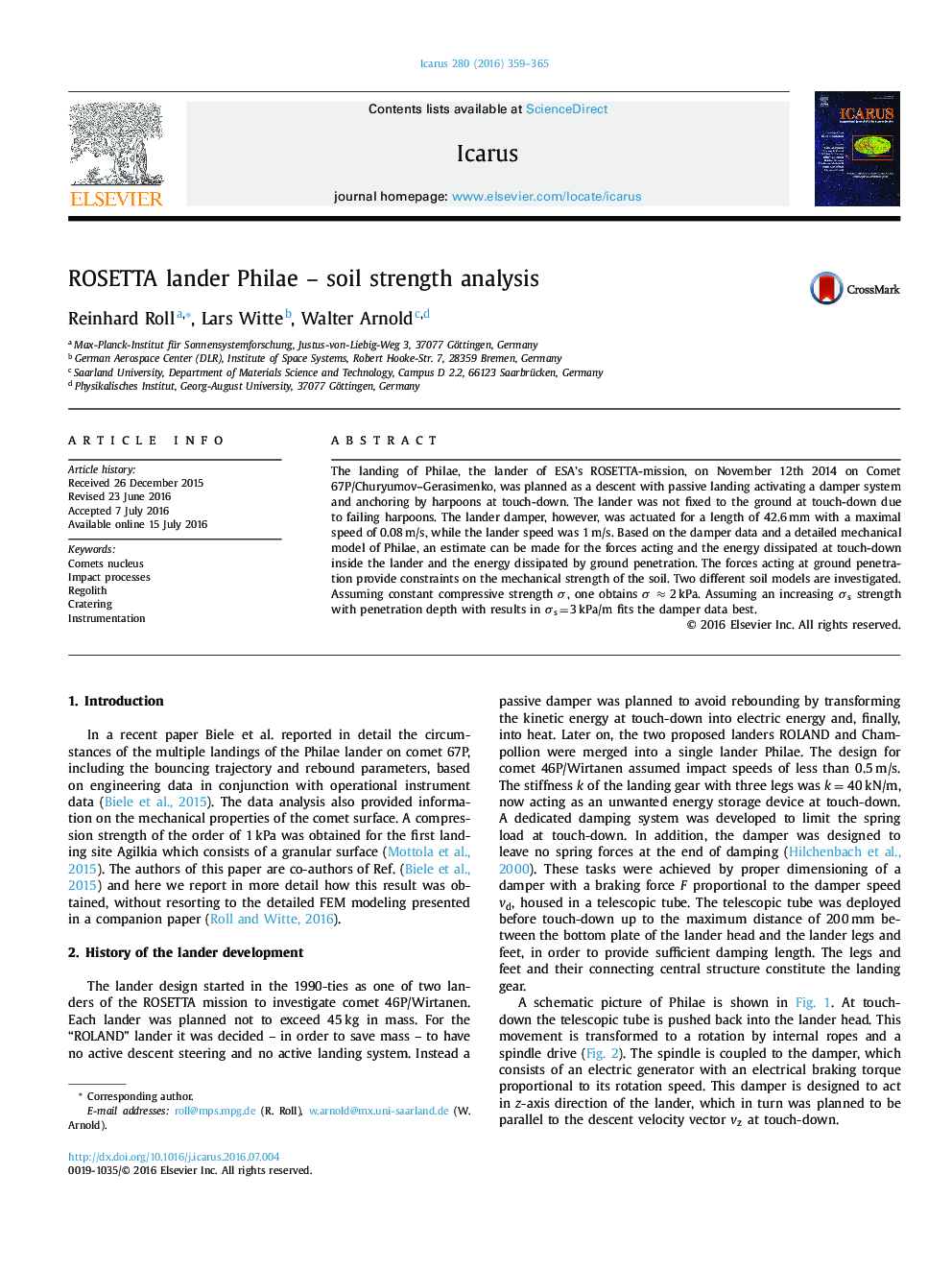| Article ID | Journal | Published Year | Pages | File Type |
|---|---|---|---|---|
| 8134806 | Icarus | 2016 | 7 Pages |
Abstract
The landing of Philae, the lander of ESA's ROSETTA-mission, on November 12th 2014 on Comet 67P/Churyumov-Gerasimenko, was planned as a descent with passive landing activating a damper system and anchoring by harpoons at touch-down. The lander was not fixed to the ground at touch-down due to failing harpoons. The lander damper, however, was actuated for a length of 42.6 mm with a maximal speed of 0.08 m/s, while the lander speed was 1 m/s. Based on the damper data and a detailed mechanical model of Philae, an estimate can be made for the forces acting and the energy dissipated at touch-down inside the lander and the energy dissipated by ground penetration. The forces acting at ground penetration provide constraints on the mechanical strength of the soil. Two different soil models are investigated. Assuming constant compressive strength Ï, one obtains Ï â 2 kPa. Assuming an increasing Ïs strength with penetration depth with results in Ïs = 3 kPa/m fits the damper data best.
Related Topics
Physical Sciences and Engineering
Earth and Planetary Sciences
Space and Planetary Science
Authors
Reinhard Roll, Lars Witte, Walter Arnold,
